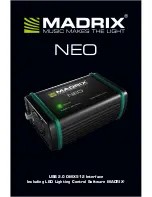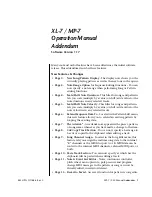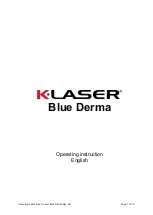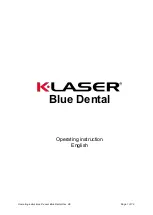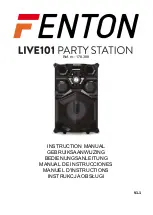
Form 1189 SRF-48 ROLL FEED 4/1/2009
9
NOTES ABOUT ‘
POSSIBLE PROBLEM TOOLING’
: *
o
A tight die, one that is not square, or has other tooling problems, will cause
significant difficulty and downtime. Accuracy in feeding is directly related to how
easily the feeder can position the strip in the die. Binding, bad part ejection, or
sticking parts may cause the material to "jam" in the die.
o
The
Ultra Control
will "try" to overcome the "jam-up" by applying more power to
the rolls.
ONE OF FOUR OUTCOMES WILL RESULT:
1.
The feed will continue to try to move the strip (if the rolls do not slip) until the Feed
Cam opens. A
SYNC FAULT
Error will occur and the press will be stopped by the
feeder.
2.
The feed will apply more power to the rolls, causing them to slip on the material.
This produces a "short-feed". In reality the feeder did not "miss-feed". The rolls
were positioned properly, the strip did not keep up, causing the die to close and a
miss-hit is produced.
3.
The feed applies more power to a thin strip, causing the material to buckle
somewhere between the feed and the die set. The feeder positioned the strip
accurately, it just did not occur in the die set.
4.
The feed tries to apply so much power to a heavy strip in order to move it, that
excessive current is drawn by the servo drive. This results in the drive shutting down
to protect itself and in doing so stops the press.
NOTE:
The feed detected a problem and emergency-stopped the press before the die
closed. In using the
Ultra Control
, you in fact have added a "die protection" system to
your tooling.
*
A tooling problem is a problem caused by tooling and not the Feeder itself.
1.6. PNEUMATIC PILOT RELEASE
During operations such as forming or using pilots, the purpose of the Pneumatic Pilot Release is to
release the strip from being held by the feeder rolls. This allows the material to be adjusted slightly
any time during the press cycle.
The pneumatic pilot release is controlled by a solenoid valve connected to (2) pneumatic cylinders.
Once the material thickness is set correctly (Ref Figure 3A) no further action is required.
The Pilot Release system requires hook up of outside air and electrical connections.
The pilot release is operated by applying the appropriate voltage signal from the
Ultra Control
to
actuate the 3-way solenoid valve to open the feeder rolls. The activation signal can come from a
source such as a rotary cam switch mounted on the press.
The solenoid valve, located on top of the servo feed, is provided with a cable attached to the solenoid
valve for connecting the power signal leads.




















